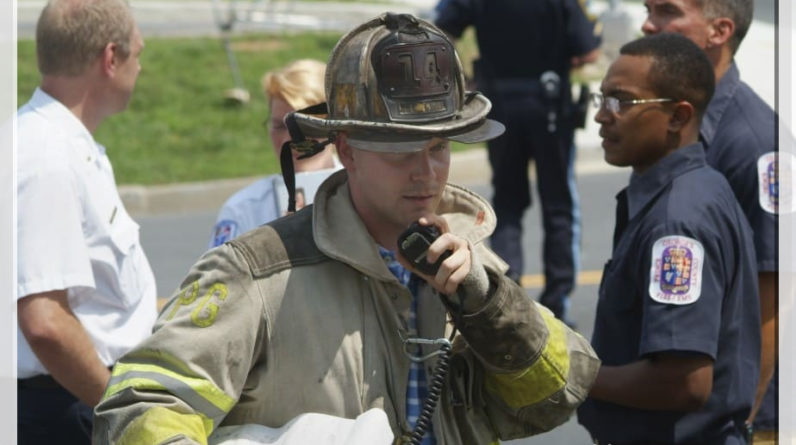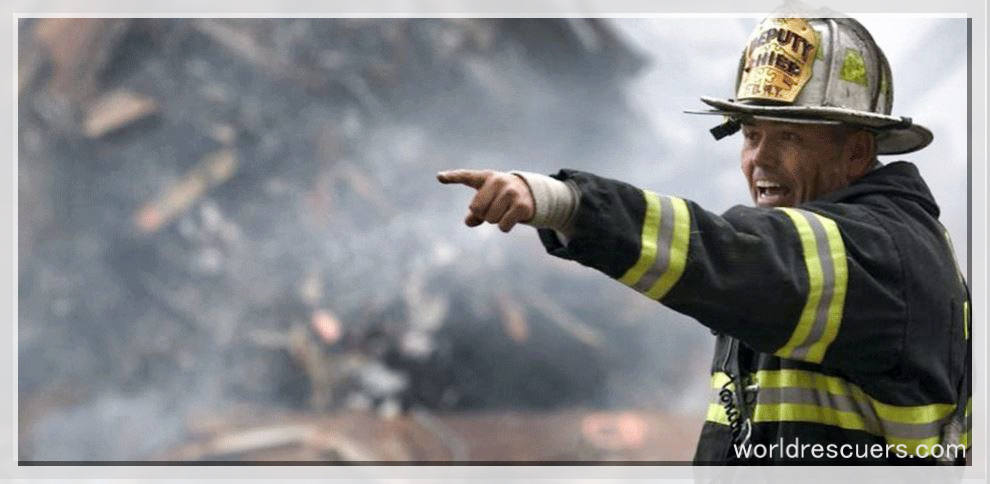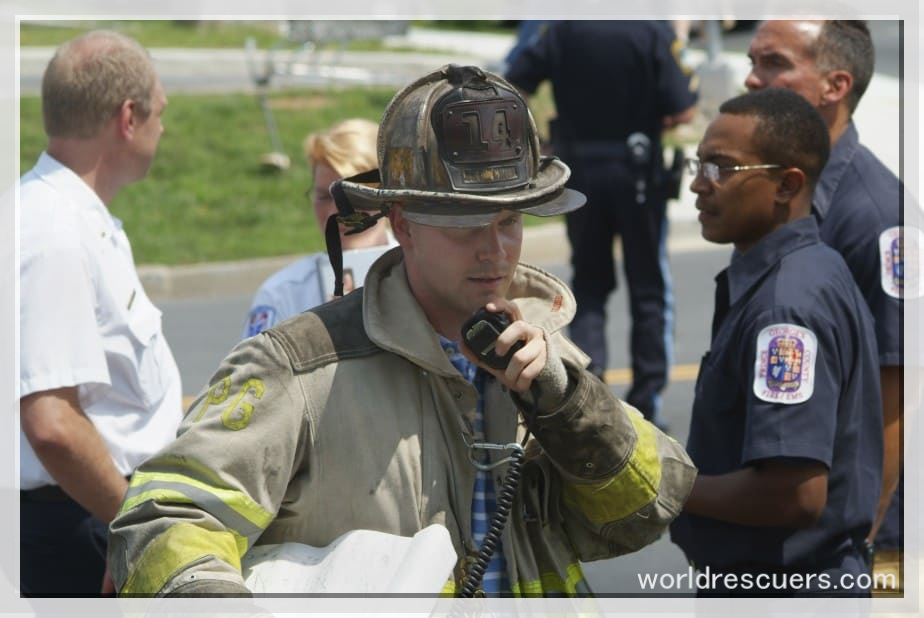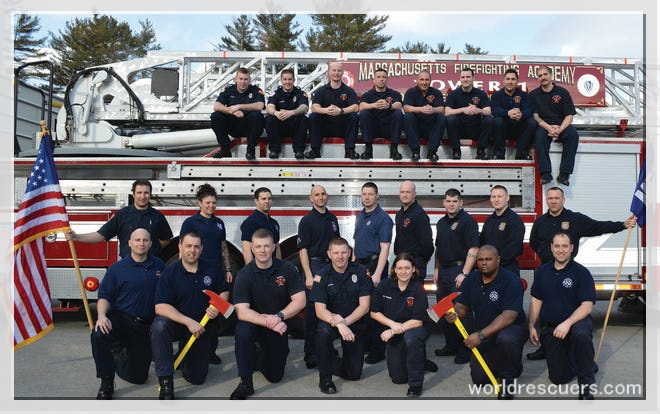
Fire Department Ranks
The ranks and positions in the standard municipal fire service, starting from entry-level to the highest rank. In this article, we will discuss the fire department ranks in detail. The fire department was created as a paramilitary group in 1647. It has also created the foundation of the fire department ranks that we have today.

When firefighters are hired as firefighters, they are considered to be recruits. They have to complete an academy to qualify as probationary firefighters. They are in probationary status for six months. The promotion process for higher ranks depends on years of experience, test scores, and other evaluation criteria.
In most municipalities, the civil service exam determines all but the top 2 ranks. i.e., the top two positions, which are all except positions 9 and 10:
1. Volunteer firefighter
2. Probationary firefighter
3. Firefighter/EMT
4. Firefighter/Paramedic
5. Driver Engineer
6. Lieutenant
7. Captain
8. Battalion Chief
9. Assistant Chief
10. Fire Chief
In major cities, there can be other ranks and positions that are usually leadership posts. These positions are typically created, e.g., by the fire commissioner or the mayor of a city.
Fire department ranks examples include:
- 1st Deputy Fire
- Commissioner
- Assistant Deputy Chief
- Paramedic
- Assistant Deputy Fire
- Commissioner
- Deputy Chief Paramedic
- Deputy District Chief
- Deputy Fire
- Commissioner
- District Chief
- Fire Commissioner
It is important to note that the Emergency Medical Services division in numerous municipalities also has its hierarchy.
The most common positions are as follows:
- Ambulance Commander
- Fire Paramedic
- Fire Paramedic Candidate (Probationary Fire Paramedic)
- Paramedic Field Chief
- Paramedic in Charge
Descriptions of the various positions and ranks:
Assistant Chief
The Assistant Chief performs numerous administrative tasks and offers technical and other support to the Chief and other staff within the department. The Assistant Chief is often responsible for developing and budgeting plans.
Battalion Chief
Similar to the operations chief or the CEO of a company, the Battalion Chief is responsible for ensuring that they must complete the work. A Battalion Chief is on duty all day, seven every day of the week. So every battalion should have at minimum three rotating battalion chiefs who can cover the entire time. Battalion chiefs typically have the most senior in any circumstance since firefighters and other chiefs typically have only full-time jobs.
Battalion chiefs are accountable for ensuring that each specialized role is filled for every shift. They may also be required to make innovative human resources resourcing during times. Battalion chiefs also manage advanced management of work schedules as well as arrangements for sick days and vacations.
Battalion chiefs are often the primary source of official documentation concerning investigation and incident reports.
Captain
The captain is responsible for the day-to-day operations of the engine, truck, or ladder business and for evaluating the functional aspects of the crew’s performance with an eye on evaluation and feedback. The captain can supervise multiple lieutenants. Some of them will most likely be able to fill in the captain’s place if the captain is unavailable.
The captain is typically in charge of actions at an emergency site and often speaks for the organization to the general public via the media or other public forums.
Driver Engineer
As the name suggests, the driver/engineer is the person who drives the fire truck. They also oversee, manage, and maintain essential firefighting equipment like ladders and pumps. The DE could also play a lieutenant’s position in the lieutenant’s absence.
The DE has a vast understanding and knowledge of the essential equipment in the manner that the title “engineer” implies.
Fire Chief
As one would imagine, the Chief is the primary leader and supervisor of the relevant unit. The unit in effect may differ depending on the factors mentioned elsewhere and may include but are not limited to the next section.

The executive manager is a department director and is the primary point of reference in terms of responsibility for operations. Equipment and personnel management and managing safety education programs, security and protection measures and extinguishment, emergency medical assistance, and many more are the responsibility of the job.
Firefighter
While the term “firefighter” is popularly used to refer to any firefighter professional, in this section’s context, it’s an exact designation that indicates an undefined rank and position within a firefighting organization.

At the feet of the firefighting process, firefighters are responsible for most of the hands-on tasks that help eliminate fires and help save lives. The firefighter handles hoses and controls the placement strategy, manages an array of fire-rescue equipment, utilizes numerous advanced technologies and methods, and often is the first to locate, search and assist victims.
Lieutenant
In the ranks of the Captain/Driver/Engineer and the Captain, Lieutenants are often in an engineering firm as the one who oversees training, daily operations, and the response to emergencies. If the captain isn’t available and unable to attend, a lieutenant can be in charge.
Probationary Firefighter
The firefighter on probation is an employee who is not exempt (i.e., “at will”) at the lowest level in the hierarchy. The firefighter on probation is usually in the process of undergoing evaluation and training. The period of a probationary firefighter can be from 3 to six months or more. In contrast, the operational span of the timeframe that covers the latter could range from 6 months to one year.
Units
The fire department’s units are classified into various organizational categories. These categories represent the functions of firefighting, physical equipment, and geography.
- Fire Suppression and Rescue
- Emergency Medical Services
- Special Operations
It could include boats, special nets and ladders, collapse rescue units, specially designed ambulances or mobile ventilation equipment, hazardous material technologies, or other specialized devices for use in the field.
Battalion
A battalion typically consists of several stations. It includes the different companies, as explained below, which are assigned to these places. The Battalion Chief oversees this group of companies.
Engine or Truck Company
A truck or engine business comprises a large piece of equipment, as well as the emergency services and firefighting emergency-management personnel who go along with it. The company is led by a crew member who holds a paramilitary rank (i.e., an officer) like a captain or lieutenant.
If one officer’s rank is unavailable, they could fill in the next rank, and a lieutenant can serve as “acting captain” as needed.

Hi, I am John Smit a Captain in Fire Department City of Newyork with over years of experience in the field of Firefighting and HSE. My passion for fire safety started when I was a young boy and witnessed a neighbor’s house go up in flames along with precious lives. Since then, I had dedicated my life to ensuring the safety of buildings, properties, and individuals in case of a fire and medical emergencies.

